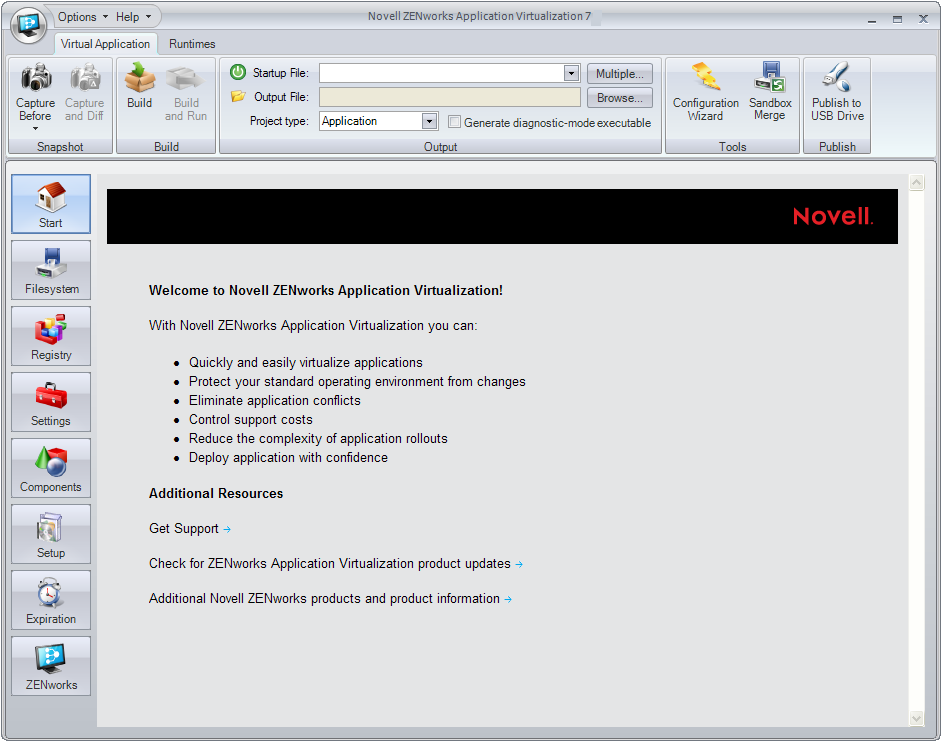2.0 Preparing GroupWise Messenger for Virtualization
The section contains step-by-step information to help you use Novell® ZENworks® Application Virtualization to prepare Novell GroupWise® Messenger to run as a virtual application.
-
Install ZENworks Application Virtualization onto a clean machine.
You can prepare a clean machine by uninstalling GroupWise Messenger. However, we recommend that you start the process on a machine that has only the desired Windows OS, any applicable OS service packs, and ZENworks Application Virtualization installed. Starting with a machine that includes only these items helps to ensure that your virtual application does not contain settings that might cause conflicts.
-
Click > > > to start the application.

-
Click in the section of the ribbon.

This process captures the first snapshot image. Snapshotting iterates through the file system and registry, and therefore might take several minutes to complete.
-
(Optional) Click the down-arrow on the bottom of the button, then click .
Saving the first snapshot lets you skip this step when snapshotting subsequent applications from the same clean machine image.
-
Install GroupWise Messenger on the clean machine.
For installation instructions, see the GroupWise Documentation Web site. Depending on the version of GroupWise Messenger that you want to deploy in your environment, click the appropriate link, then locate and display the Installation Guide.
-
Click in the section of the ribbon.

-
Browse to and select the destination folder to store the snapshot, then click .
This process captures the second snapshot, computes the delta between the two snapshots, and populates the virtual application with the delta entries. This process might take a few minutes.
-
(Optional) Click the button on the left side of the ZENworks Application Virtualization console to review the file system and registry entries.
You can remove any files or settings that are not required for proper execution of your virtual application. Removing unused entries reduces virtual application size. However, accidental removal of a required resource might cause your virtual application to not function properly.
-
(Conditional) If you use ZENworks Configuration Management in your environment and you want to control how virtual applications are used or to create and publish ZENworks bundles, click the button on the left side of the ZENworks Application Virtualization console to display the ZENworks options.
For more information, continue with the instructions in Section A.0, Using Virtual Applications with ZENworks Configuration Management.
-
From the drop-down list, select the GroupWise Messenger executable file (NMCL32.exe).

-
Click in the section of the ribbon to process the application.
-
Specify the location and filename of the virtual application executable file.
-
Test the virtual application executable file on another machine.
The executable file is now ready to distribute to users. You can use any method you want to distribute the file, including USB thumb drives.
You can also use Novell ZENworks or Novell ZENworks Configuration Management to distribute the file. For more information, see the ZENworks Documentation Web site.
Users must authenticate to the GroupWise Messenger system after they launch the virtual application.